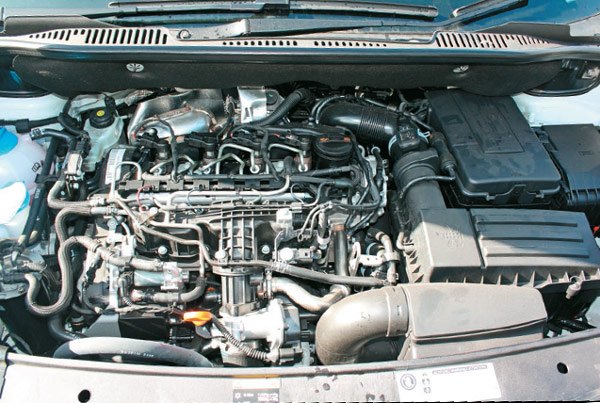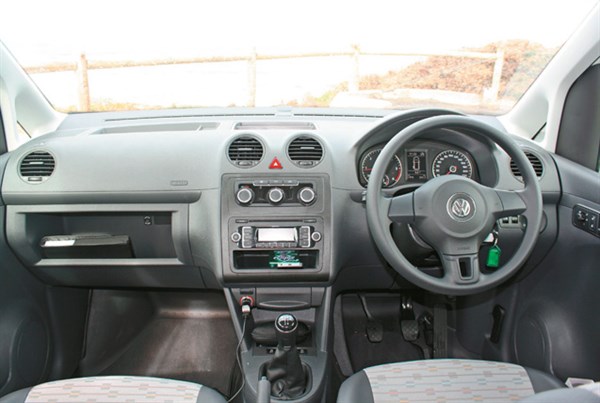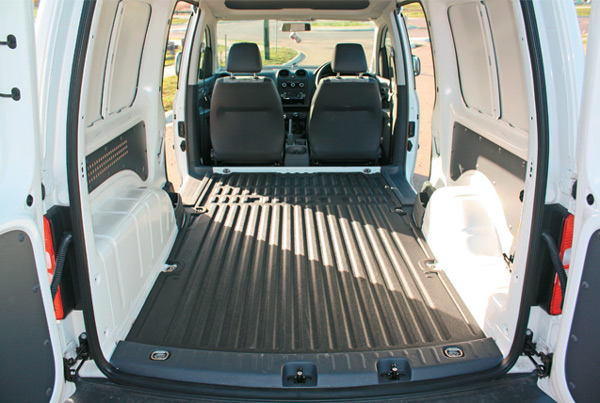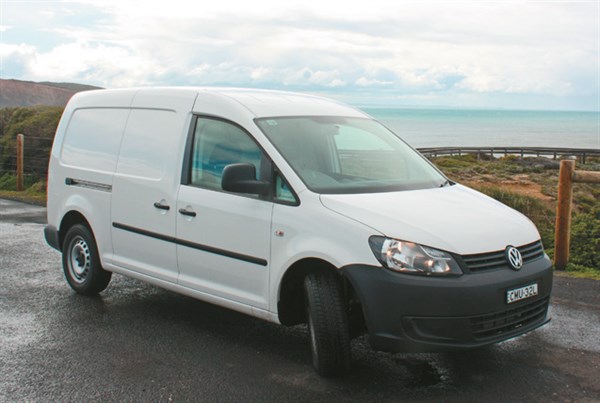Matt Wood tests the Volkswagen Caddy, a commercial vehicle that looks like a panel van and drives like a Golf.
While testing the Volkswagen Caddy Maxi van, the engine stopped. Of course, it was meant to but it was still quite unsettling.
The reason for the engine shutting down is the Blue Motion feature now available on the Caddy TDI. BlueMotion is an auto start/stop feature that saves fuel by shutting down the engine when stopped in traffic.
While many would be familiar with this concept on vehicles with automatic transmissions, this was the first time I’d encountered the feature on a vehicle with a manual gearbox.
So, when I pulled up to the first set of traffic lights, shifted into neutral and took my foot off the clutch, the engine stopped.
When you put your foot on the clutch again to take off from the intersection, the engine fires up and away you go.
Power for the stop/start function is scavenged from a regenerative braking system that feeds the recovered energy to the Caddy’s battery.
Take your foot off the accelerator and coast or brake gently and the regenerative braking will start gathering the energy for later.
If the power stored in the battery drops below a certain level, the engine will remain running until there’s enough power in the system to power the start/stop function again.
You may be wondering: why go there in the first place? Well, Volkswagen is claiming a not-so-insignificant fuel economy figure of 5.2 litres/100km.
That sort of fuel economy from a commercial vehicle is enough to get anyone’s attention.
That’s an improvement of 0.6/100km over the non-BlueMotion Volkswagen Caddy Maxi, and that also equates to CO2 emissions of 136g/km.
The Caddy’s success has spawned many competitors in the light van market, and even in Australia that market is only set to become more crowded as more models arrive on our shores in the next 12 months.
But the advantages of vehicles like the Caddy are clear: they are cheap to run, can access anywhere a small car can get to and offer car-like comfort and driving dynamics.
Engine
The 1.6-litre turbo-diesel power plant is surprising performance-wise.
While not exactly a tyre smoking powerhouse, the 75kW engine was happy enough to have a go above 1,500rpm where peak torque of 250Nm is on-hand.
Above this, the diesel chatter of the engine fades into the background and a slight turbo whine indicates that the little V-dub delivery van is putting power to the front wheels in earnest.
Transmission
The 5-speed manual shift only encourages this kind of economy defeating behaviour, with a slick, precise shift and a short throw.

Cab and Controls
The long wheelbase Volkswagen Caddy Maxi provides 4.2 cubic-metres of load volume and has a load capacity of 800kg.
Rear 60/40 split barn doors allow forklift and pallet access from the rear and sliding doors either side allow access to the cargo area.
Eight tie-down points are spaced around the cargo area to help secure the load if need be.
The layout of the Caddy makes it a remarkably versatile platform that is now available in crew form with fold-out rear seats and in up-market wagon form with a higher level of specifications.
From behind the wheel the base TDI 250 is fairly basic inside, there’s overhead storage and door storage for documents as well as dash top storage for knick knacks.
The driver’s seat is very comfortable and supportive and as you’d expect the driving position is comfortable and car-like.
Two airbags lurk unseen in case the worst happens. The Caddy Maxi even earns itself a four star Australasian New Car Assessment Program (ANCAP) rating.

Performance
My week in the Caddy saw me take in the bustle of Melbourne’s CBD, the suburbs of Geelong and a spin down the Great Ocean Road to Lorne. The latter, of course, was completely unnecessary other than the fact that I really liked driving the thing.
The Golf heritage of the Caddy shows in its on-road handling and driveability.
Bearing Volkswagen’s history in mind, I was curious to see whether I could actually fit a bed and a surfboard into the Caddy. Perhaps like the Kombi, the Caddy could be an environmentally friendly shaggin’ wagon for a new millennium?
I should also add that I’ve also been campaigning for the return of the tropical safari suit and walking socks as appropriate corporate wear.
After a finding the right objects, I was able to fit a full-size single bed in the cargo area with ease; I was even able to fit in a surfboard.
Around town, visibility is fine, even with the windowless sides, although I’d be more likely to reverse into a parking spot to make getting out easier. But it’s the Caddy Maxi’s handling at both town and highway speeds that impressed me.
When empty, it doesn’t have the stiff bouncing ride of an empty commercial vehicle and when loaded it stays planted firmly on the road. The biggest noise intrusion in the city was actually the sloshing of all the fuel in the fuel tank when pulling to a stop.
Even with the slightly longer wheelbase, the front-wheel drive configuration of the Caddy makes for an easy handling, predictable drive; even on tight winding roads in the rain.
The low profile of the Volkswagen Caddy Maxi means that it’s not as susceptible to buffeting from side winds as some larger more upright type vans.
The BlueMotion feature does help an already thrifty TDI Caddy sip dinosaur juice even more frugally. By the time I returned the little Caddy, my combined fuel usage figure was down to 4.9 litres/100km over 627km of highway, country and city driving.
That also includes some rather spirited throttle usage on occasion. But, that was with me actively trying to use BlueMotion, however, I’m not convinced that BlueMotion is the answer for fleet vehicles.
You have to want to use the function in the first place and make an effort to shift out of gear when sitting in traffic. The reality is that many employee drivers will probably keep their foot on the clutch at the lights and inch along in congested traffic.
Of course, I did try and catch the system out, leaving my gear selection to the last minute as the lights change. There’s only a slight lag as the engine fires up and it’s easy to compensate for.

Verdict
For a small business or owner-driver, the person behind the wheel can make an effort to use BlueMotion to their advantage.
Being able to choose to save fuel and monitor that saving on the dashboard readout is more likely to appeal to the person who’s paying the fuel bills in the first place.
While it may mean a bit of a change in mindset and driving habits to really take the start/stop function on board even a lead foot like me can save fuel.
It may be business focused light commercial but, after my week behind the wheel of the van, I really want to see a surf version of the Volkswagen Caddy Maxi van. A Caddy with bubble-tint windows and some GTi rims, and of course, covered in air brushed murals of dragons, Vikings and scantily clad ladies playing scrabble.
The list price of $27,990 makes it quite a reasonably priced dual purpose vehicle.
Specifications
Make/Model: Volkswagen Caddy Maxi van TDI250 BlueMotion
Engine: 1.6-litre 4 cylinder turbo diesel, with BlueMotion auto start/stop function
Power/Torque: 75kW @ 4,400rpm / 250Nm @ 1,500rpm
Transmission: 5-speed manual
Drive: Front
Payload: 800kg
GVM: 2,310kg
Load Volume: 4.1 cubic-metres.


